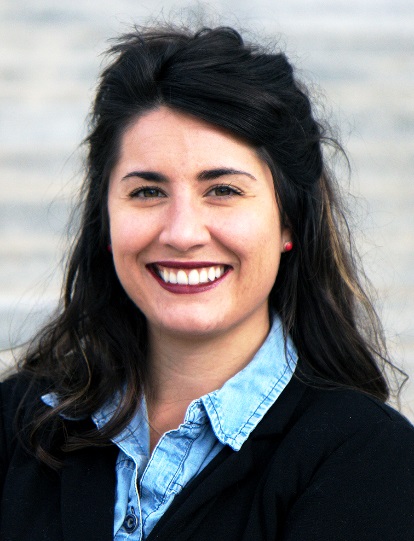Idaho likely has a record budget surplus, and some education leaders say it’s time for a big change.
They’d like to see legislators use some of the money to repair or replace aging and overcrowded schools.
The history isn’t encouraging. Legislators have long resisted the idea of using state dollars for buildings — putting the responsibility, and the out-of-pocket cost, on the shoulders of local property taxpayers.
But education lobbyists hope two factors will change the conversation this time around.
The first factor is the surplus itself. Based on projections, Idaho ended the 2021-22 budget year on June 30 with a $1.3 billion surplus. The final numbers are expected next week.
The second factor is a scathing January report from the Legislature’s research arm, the Office of Performance Evaluations. The report said it would cost hundreds of millions of dollars to bring Idaho’s schools to “good” condition. But researchers were hesitant to put a price tag to the maintenance backlog, because the Legislature hasn’t bothered to ask for a statewide school buildings assessment since 1993.
Big surplus, meet big problem. Big problem, meet big surplus.
But only if lawmakers are willing to make a historic shift in how they view the state’s obligation to education.
“This is a golden opportunity,” said Rod Gramer, CEO of Idaho Business for Education. “I know it’s controversial, but what better time to start tackling that problem?”

Gramer says the Legislature should address this large surplus like his business clients would. He thinks lawmakers should look for strategic investments that don’t tie up money in the long run. That could also mean helping school districts pay down existing bonds and supplemental levies, endowing the state’s college Opportunity Scholarship program, or beefing up a statewide classroom technology fund, to get ahead of what Gramer calls a “tsunami” of replacements when the schools’ pandemic computer purchases begin to wear out in a few years.
Putting surplus dollars into school construction and repair promises several benefits, Gramer said. By replacing or fixing buildings now, school districts could get out ahead of rising materials and labor costs. By using state dollars to do the job, districts would not have to issue bonds, or go to voters for bond approval. This would provide Idahoans with property tax relief, addressing a knotty policy priority that lawmakers have wrestled with in recent sessions.
The facilities needs and the January report hit home for Andy Grover, executive director of the Idaho Association of School Administrators. The former superintendent of the Melba School District, Grover remembers how a new elementary school changed everyday operations in the rural district — when students attended classrooms with functioning air conditioning and fire alarms, and no longer had to leave the building to go to the cafeteria. But many districts struggle to get the two-thirds majority to pass a bond issue, and others struggle with the rising cost of construction. “We’re always trying to play catchup,” he said.
Trying to siphon surplus money into school buildings is also a bow to political reality.

For years, education lobbyists have pushed to reduce the two-thirds supermajority requirement for school bonds. But that requires a constitutional amendment, which requires two-thirds backing in both houses, and Idaho School Boards Association deputy director Quinn Perry doesn’t see the votes for that. She’s probably right — especially since many lawmakers want to make it tougher for schools to pass bond issues. This year, the House passed a bill to limit “repeats” on failed bond issues, but the Senate didn’t hear it.
Since the supermajority isn’t going anywhere, using the surplus provides an avenue to make Idaho schools more comfortable and more safe, Perry said.
And two months after the mass shooting at an Uvalde, Texas, elementary school, that safety issue resonates all the more with parents and Idaho Education Association members, spokesman Mike Journee said. While the teachers’ union would like to see the 2023 Legislature continue its momentum on improving salaries and benefits, secure and equitable facilities should also be part of the equation, he said.
To be clear, the education groups have other spending priorities for 2023. Teacher pay raises, more money for hiring hard-to-find classified staff such as bus drivers and classroom paraprofessionals, and more money to help schools move employees onto the state’s health insurance plan. But all of these are ongoing budget items. School facility spending, like any infrastructure spending, can be more easily adjusted up and down depending on funding.
Such as this surplus — which is record-setting, but maybe short-lived. Many lawmakers have been somewhat skeptical of the state’s rising tide of surpluses, knowing that the one-time federal COVID-19 stimulus money has contributed to the windfall.
Normally, $1.3 billion of surplus would buy legislators a lot of cushion and leeway. It still does. But so many unanswered questions loom, six months before the 2023 legislative session.
Will inflation continue its surge?
Will the state and/or national economy fall into a recession?
Will Idaho voters approve the Reclaim Idaho education initiative — designed to pump $323 million into K-12 budgets, by boosting income taxes for corporations and the state’s wealthiest citizens?
And who exactly will be in charge at the Legislature? At least 42 of the state’s 105 lawmakers will be newcomers, and there will be leadership changes on the Joint Finance-Appropriations Committee and the Legislature’s education and tax committees. In addition, Idaho will have a new state schools superintendent, Republican Debbie Critchfield or Democrat Terry Gilbert.
A lot will happen between now and January, when the debate over the surplus begins in earnest.
And while there will be plenty of competing proposals for the surplus, a school facilities initiative would set a precedent. It would change, maybe forever, the way the state approaches school construction.
When senators asked the state Office of Performance Evaluations to study the issue in 2021, they suggested Idaho’s reliance on local bond issues could be obsolete. More than a year later, Gramer believes it’s time to give local property taxpayers some help. “We can’t continue to go down this road.”
Kevin Richert writes a weekly analysis on education policy and education politics. Look for his stories each Thursday.
